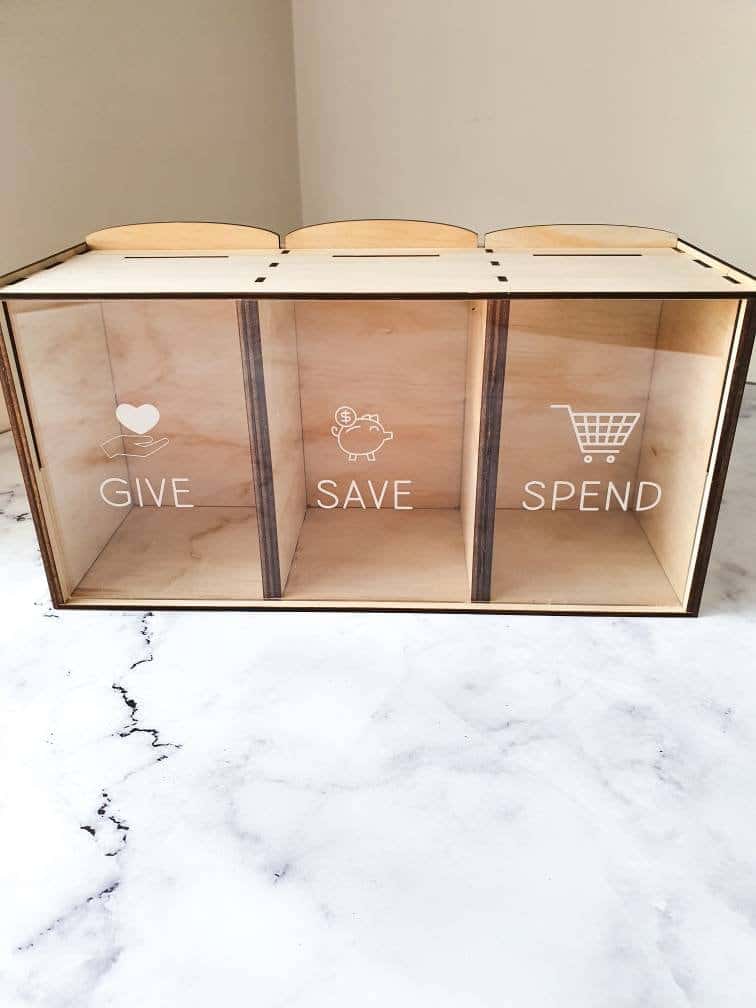Save, Spend, Give Money Box: A Parent’s Guide to Financial Literacy for Kids
Hey there, awesome parents! ? Are you striving to infuse your children with super money management skills? Well, do a happy dance ? because you’re about to discover the delightful world of the Save, Spend, Give money box—a magical tool to make learning about finances fun for your little ones! ?
In this effervescent guide, we’re going to spill the beans on how you can use this three-part money box to lay the foundation of smarts and heart in your child’s financial journey. So, buckle up as we embark on a merry ride to foster a sense of saving savvy, spending smarts, and the golden glow of giving. ?
What Is a Save, Spend, Give Money Box?
Imagine a colorful box with three delightful compartments, each labeled for a financial goal: saving, spending, and giving. ? This isn’t just any box; it’s a visual and practical teaching aid designed to introduce kids to the basic principles of personal finance. By allocating their pocket money into these sections, children can learn about budgeting, setting goals, and the importance of generosity early on. ?
Why You’ll Love the Save, Spend, Give Method
There’s no doubt that children learn best through play and practical application. ? The Save, Spend, Give method offers both and here’s why it’s so beneficial:
- Simplicity: The physical separation of funds makes it easy for children to understand where their money is going.
- Balance: It teaches kids to balance their immediate desires with long-term goals and social responsibilities.
- Money Mindset: This method shapes a positive money mindset that values saving, responsible spending, and the joy of sharing.
- Goal-Setting: Saving up for a toy becomes a mini-adventure that teaches patience and satisfaction in reaching goals.
- Empathy: Encouraging giving nurtures empathy and the understanding that even the smallest contribution can make a big difference for others.
A Step-by-Step Guide to Using Save, Spend, Give Money Box
Ready to transform your kiddo into a budgeting whiz kid? ??? Let’s walk through the steps of using the Save, Spend, Give money box in a way that is both educational and enjoyable!
Step 1: Choose the Perfect Money Box
First, find a money box that’s just as unique as your child. ?? Whether it’s a DIY project you tackle together or a ready-made box with enchanting designs, make sure it’s something that will ignite their excitement. Look for durable materials and clear labeling to withstand the enthusiastic saving of a mini-money master.
Step 2: Establish Rules Together
It’s chit-chat time! Have a heart-to-heart with your child to set the guidelines. How much goes into each slot? ? Can they move money between sections? What will they save for? Who will they give to? By involving them in this decision-making process, you ensure they’re more invested in following through. Plus, it’s a great bonding moment!
Every journey into financial wisdom begins with a single coin drop. Stay tuned as we continue to cultivate your child’s curiosity and capacity for smart money management with the Save, Spend, Give money box. And remember, you’re not just teaching them about money; you’re setting them up for a lifetime of healthy financial habits! ?
So get those money boxes ready, and let’s turn this into a rewarding adventure for the whole family. Let the savings begin, and may the coins clink merrily into the right compartments, heralding a future of fiscal fabulousness for your little ones! ?

Five Key Things Parents Should Know in Preparing for Save, Spend, Give Money Box
1. Start With the Basics
Before introducing the money box, ensure your child has a grip on the basic concept of money. Use real coins and notes to explain different values and how money can be exchanged for goods and services. A solid understanding of these basics will make the Save, Spend, Give system even more effective!
2. Lead by Example
Children are great imitators, so be a shining example of financial literacy. Share your own experiences with saving, spending wisely, and giving. Your actions and attitudes towards money will set the stage for their own practices, making the money box an extension of what they see from you.
3. Keep the Conversation Going
Money management isn’t a one-time lesson; it’s an ongoing conversation. As your child grows and their understanding deepens, adjust the conversations to include more complex topics like interest, budgeting for bigger items, and the impact of giving on their community. The money box is a perfect tool to facilitate these discussions!
4. Celebrate Milestones
Anytime your child reaches a financial goal, it’s a cause for celebration! Whether they’ve saved enough for a new toy or donated to a local charity, recognizing these achievements is crucial. This not only bolsters their confidence but also reinforces the positive behaviors associated with each compartment of the money box.
5. Patience Is Key
Remember, learning to manage money is a skill that takes time to develop. Show patience and encouragement as your child navigates their financial journey. If they make mistakes, use them as teachable moments rather than times for reprimand, ensuring they learn and grow from each experience.
Equipping your child with a Save, Spend, Give money box is more than teaching them about fiscal responsibility; it’s about shaping a future adult who is financially astute and socially conscious. Understanding these five key points will help you prepare effectively for this exciting and formative adventure!
Together, let’s fill those money boxes and hearts with a joyous sense of accomplishment and giving! ? The Save, Spend, Give money box isn’t just a learning tool; it’s a treasure chest for life’s valuable lessons. ? Let’s embark on this sparkling journey into the world of coins, currency, and caring. ?
See more great Things to Do with Kids in New Zealand here. For more information see here
Disclaimer
The articles available via our website provide general information only and we strongly urge readers to exercise caution and conduct their own thorough research and fact-checking. The information presented should not be taken as absolute truth, and, to the maximum extent permitted by law, we will not be held liable for any inaccuracies or errors in the content. It is essential for individuals to independently verify and validate the information before making any decisions or taking any actions based on the articles.




